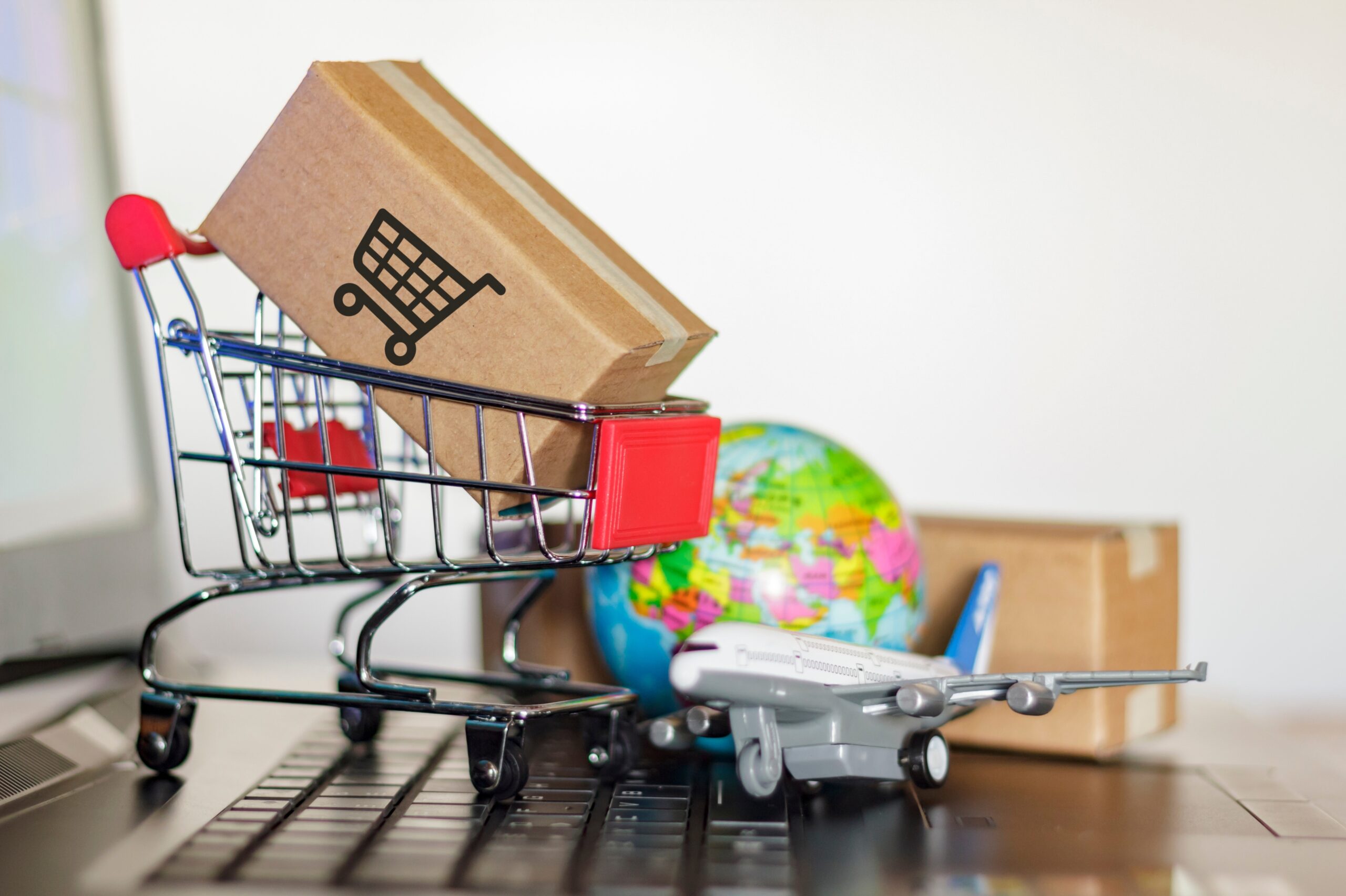Evolution of E-commerce – A Retrospective Analysis
Written by
Editorial TeamPublished on
Explore the evolution of e-commerce. Dive into the retrospective analysis of the e-commerce. (Ad)

Commercial collaboration
Remember those days of flipping through catalogs and waiting weeks for your order to arrive? E-commerce has come a long way since then, transforming the way we shop. What began as a trickle of online transactions in the early days of the Internet has become a global flood, forever changing the retail landscape. VINSINFO will trace its journey from the dial-up era to the age of mobile apps and social media shopping, highlighting the key milestones and innovations that brought us to this point. Buckle up, as we explore the exciting story of how e-commerce went from a novelty to a necessity!

The Evolution of E-commerce
Electronic commerce, or e-commerce, has completely altered how we shop and do business. It transformed over time from a simple idea to a worldwide phenomenon that is reshaping markets and changing consumer behavior. We’ll go deep into the chronology of significant e-commerce events emphasizing significant turning points that have influenced the online environment.
1979: The Very First Episode of Online purchasing
- English inventor Michael Aldrich introduces the idea of online purchasing by using phone lines to link a computer and television.
- By enabling secure data transfer, this system—known as Videotex—lays the groundwork for upcoming e-commerce platforms.
1994-1995: The Emergence of E-commerce Titans: Amazon and eBay
- Jeff Bezos launches Amazon.com, an online bookstore, signifying the inception of one of the world’s most impactful e-commerce firms. This was further bolstered by Netscape’s introduction of SSL encryption, which offered a secure method for transmitting sensitive data over the internet.
- Subsequently, Pierre Omidyar founded eBay, an online auction and shopping platform, changing the way people purchase and sell items. The advent of PayPal as a secure online payment system significantly accelerates the expansion of e-commerce.
Late 1990s and Early 2000: Dotcom Boom and Bust and E-com expansion
- The late 1990s saw a rise in e-commerce startups such as Pets.com and Webvan, but the dotcom bubble burst in 2000, causing many to close and temporarily slowing the industry. The spread of broadband internet improved online shopping experiences, and advancements in logistics and fulfillment enhanced shipping options and decreased delivery times.
2005-2006: The rise of Mobile Commerce and Intro of Shopify and Magneto
- The launch of eBay’s mobile app signifies the start of mobile commerce or m-commerce. A new era of convenience has begun with the ability for consumers to use their smartphones for transactions and purchases.
- Two well-known e-commerce platforms, Shopify and Magento, have been introduced, making it simple for companies of all sizes to open online storefronts. These platforms provide extensive inventory management capabilities, safe payment methods, and fully editable templates.
2014 – 2015: Social Commerce’s Emergence and the Era of Subscription Commerce
- Social media sites like Facebook, Instagram, and Pinterest incorporate shopping features that let users buy goods right within the app. Brands use social commerce to more efficiently connect and interact with their target audience.
- Businesses like Birchbox and Dollar Shave Club pioneered the idea of allowing customers a simple way to receive things regularly, which led to a boom in subscription box services. Subscription-based e-commerce models also gained prominence.
2020: Growing Quicker Despite the Pandemic
- As a result of the COVID-19 pandemic, people prioritize online purchasing, and physical stores close temporarily. Online marketplaces, supermarket delivery services, and digital payment systems see record-breaking demand and sales.

Master the Future with Highlighting the Strengths of E-commerce
Effortless Data Migration: Transition Your Products with Ease
Effortless data migration is a cornerstone of e-commerce solutions, enabling businesses to transition their products with unparalleled ease and efficiency. Whether businesses are migrating from a legacy system, transitioning between platforms, or expanding their product catalog, a streamlined migration process ensures a seamless data transfer, minimizing downtime and disruptions to operations.
With our robust data migration tools and expertise, businesses can effortlessly import and synchronize product information, pricing data, inventory levels, and customer records across platforms. Our flexible data mapping capabilities allow seamless integration with existing systems and workflows, ensuring a smooth transition without sacrificing data integrity or accuracy. Whether you’re a small business or a large enterprise, we tailor our migration services to suit your unique needs and requirements, ensuring a hassle-free experience from start to finish.
B2B or B2C? We Speak Both Languages of E-commerce
In the dynamic realm of e-commerce, where businesses strive to thrive in both Business-to-Business (B2B) and Business-to-Consumer (B2C) landscapes, adaptability is paramount. At the heart of successful e-commerce operations lies the ability to seamlessly navigate between these two domains, catering to the diverse needs and preferences of both corporate clients and individual consumers.
A significant strength of the e-commerce platform is its proficiency in both B2B and B2C domains. Whether you’re a manufacturer looking to streamline supply chain processes, or a retailer focused on enhancing your online storefront, tailored solutions are provided to meet specific requirements, irrespective of the target audience.
Customization Masters for Leading E-commerce Platforms
In the dynamic world of e-commerce, standing out from the competition is essential to success. One of the most effective ways to differentiate your brand and create memorable experiences for your customers is through customization. As masters of customization for leading e-commerce platforms, we empower businesses to unleash the full potential of their online storefronts and drive growth in today’s competitive landscape.
The strength lies in our ability to tailor leading e-commerce platforms, such as Shopify, WooCommerce, Magento, and others, to meet the unique needs and preferences of our clients. Whether you’re a small startup or a global enterprise, we possess the expertise and experience to transform your vision into a fully customized online shopping experience that resonates with your target audience.
Future Trends in E-Commerce: Things to Keep an Eye on
New technology and customer habits are reshaping the online shopping landscape, which is continuously changing. Here’s a sneak peek at a few new developments that could completely alter the landscape of online shopping in the future:
AI for a Personalized Experience
One of the most significant impacts of AI in e-commerce is its ability to personalize customer interactions. AI-driven algorithms analyze vast amounts of data from customers’ browsing history, purchase patterns, and preferences to offer tailored product recommendations. AI also plays a crucial role in inventory management and demand forecasting. By analyzing historical sales data and current market trends, AI can accurately predict product demand, helping retailers manage their stock levels more effectively. This reduces the risk of overstocking or stockouts, ensuring that popular items are always available while minimizing holding costs.
Furthermore, AI-powered chatbots and virtual assistants are transforming customer service in e-commerce. These intelligent systems provide instant responses to customer inquiries, assist with order tracking, and resolve issues without human intervention, thus enhancing customer satisfaction and freeing up human agents to handle more complex queries.
AR/VR: Bridging the Physical and Digital Divide
Augmented Reality (AR) and Virtual Reality (VR) are emerging as transformative technologies in e-commerce, bridging the physical and digital divide by offering immersive and interactive shopping experiences. These technologies are reshaping how consumers engage with products online, providing a more tangible and engaging way to explore and evaluate items before making a purchase.
AR improves online shopping by adding digital elements to the real world. A popular use of AR in e-commerce is virtual try-ons for fashion and beauty products. Shoppers can use their smartphones to see how clothes, accessories, or makeup will look on them in real-time, which reduces uncertainty and increases confidence in online purchases, resulting in higher sales and fewer returns. Similarly, AR helps customers visualize how furniture and home decor will look and fit in their homes, making it easier to make informed buying decisions.
VR takes this immersive experience a step further by creating entirely virtual environments where consumers can interact with products in a simulated setting. Virtual showrooms and stores provide a 360-degree view of products, allowing shoppers to explore items as if they were physically present in a brick-and-mortar store. This is particularly beneficial for high-involvement purchases like cars, real estate, or luxury goods, where a detailed examination is crucial.
AR and VR offer innovative marketing opportunities for brands. For instance, AR-powered ads can engage users with interactive content, while VR experiences can create memorable brand interactions that stand out in a crowded digital marketplace. As these technologies continue to advance, they are set to play an increasingly significant role in the future of e-commerce, providing new ways for consumers to connect with brands and products in the digital age.
Blockchain: Building Trust and Transparency in E-commerce
In the realm of e-commerce, blockchain technology serves as the bedrock upon which trust and transparency are built. As consumers increasingly rely on digital platforms for their shopping needs, ensuring the integrity of transactions becomes paramount. Blockchain, with its decentralized and immutable ledger, offers a revolutionary solution to address the inherent challenges of online commerce.
At its core, blockchain enables the creation of a secure and transparent network where every transaction is recorded across a distributed ledger. This ledger, accessible to all participants in the network, serves as a tamper-proof repository of truth, eliminating the need for intermediaries and fostering peer-to-peer interactions
For e-commerce, this means that every step of the transaction process, from order placement to delivery, can be securely recorded and verified on the blockchain. Customers can trace the journey of their purchases in real time, gaining unprecedented visibility into the supply chain. This transparency not only instills confidence in the authenticity and quality of products but also provides a mechanism for addressing issues such as counterfeit goods and supply chain inefficiencies.
Moreover, blockchain’s smart contract functionality further enhances the e-commerce experience by automating contractual agreements and enforcing predefined conditions.
Evolving Consumer Landscape
As technological advancements continue to redefine the way we shop, businesses must adapt to meet the changing demands and expectations of today’s digital-savvy consumers. One of the most significant shifts in the consumer landscape is the rise of omnichannel shopping experiences. No longer confined to a single platform or device, consumers now expect seamless integration across various online and offline channels. Whether browsing products on a mobile app, making purchases through social media platforms or visiting brick-and-mortar stores, consumers demand consistency and convenience at every touchpoint.
Moreover, the proliferation of mobile devices has ushered in a new era of on-the-go shopping. With smartphones becoming ubiquitous companions, consumers have unprecedented access to information and shopping opportunities anytime, anywhere. Mobile commerce, or m-commerce, has emerged as a dominant force in the e-commerce landscape, driving a significant portion of online sales and shaping consumer preferences.
Furthermore, the growing influence of social media has transformed the way consumers discover, research, and purchase products. Platforms like Instagram, Facebook, and TikTok have become virtual marketplaces, where brands engage with consumers through immersive content and personalized experiences. Influencer marketing, user-generated content, and shoppable posts have become integral components of e-commerce strategies, enabling brands to connect with consumers on a more intimate and authentic level.
Future Outlook and Expansion
Emerging Trends: Key trends and opportunities for the future of e-commerce
E-commerce is poised for a radical transformation, ushered in by a slew of innovative technologies. Augmented reality (AR) and virtual reality (VR) are reshaping our shopping experiences, offering the ability to virtually try on clothes, envisage furniture in our living spaces, or navigate a digital showroom – without leaving our homes. Artificial intelligence (AI) and machine learning (ML) are customizing our shopping experiences, predicting our requirements, and recommending products that align with our preferences. Voice commerce is gaining popularity, allowing us to engage with chatbots and virtual assistants to facilitate hands-free buying. Meanwhile, blockchain technology is emerging as a secure and transparent medium for conducting transactions, fostering trust, and simplifying the entire e-commerce process. The future of online shopping is set to undergo a seismic shift.
Expansion Strategies – VINSINFO’s plans for expansion into new markets or strategic partnerships
By partnering with established players like Zoho Commerce, BigCommerce, Shopify, Magento, Shopware, WooCommerce, Odoo Commerce, and PrestaShop, VINSINFO gains access to a vast network of merchants on these platforms. This allows them to reach a wider audience across different regions where these platforms are popular. These leveraging partnerships in the e-commerce space lend credibility to VINSINFO’s services. By integrating with these platforms, VINSINFO’s solutions become readily available to merchants, increasing their visibility and potentially leading to more customers.
VINSINFO, the e-commerce solution provider, believe that they are the finest choice because of their extensive feature set, user-friendly platform, and relentless dedication to your success. They have the resources and know-how to support your e-commerce endeavors, whether you’re a seasoned retailer or a budding entrepreneur breaking into the online market. They can help in opening an online store, simplify your business processes, or grow you current enterprise.
***


![Marketing in Europe in 2026: What's new and what hasn't changed? [McKinsey Report]](https://ecommercegermany.com/wp-content/uploads/2026/01/windows-w79mIrYKcK4-unsplash-720x480.jpg)